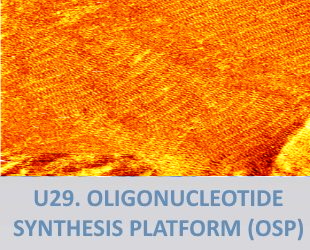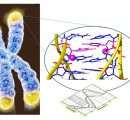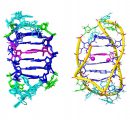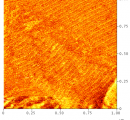U29. Oligonucleotide Synthesis Platform (OSP)


U29. Oligonucleotide Synthesis Platform (OSP)
- Scientific Director: Prof. Ramon Eritja: recgma@cid.csic.es
- Scientific Coordinator: Dr. Anna Aviñó: aaagma@cid.csic.es
- Entities: Institute of Avanced Chemistry of Catalonia (IQAC), Spanish National Research Council (CSIC)
- Address: Jordi Girona, 18-26, 088034, Barcelona, Spain
- Phone: +34 934 006 145
- Web: IQAC- CSIC
 |
 |
Description
This unit is coordinated by the Nucleic Acids Chemistry Group at the Institute for Advanced Chemistry of Catalonia (IQAC), Spanish National Research Council (CSIC) and has the equipment needed for the production of oligonucleotides at low scale (mg to mg), purification, characterization and post-synthesis modification. The service counts with laboratories for synthesis and modification of oligonucleotides including DNA/RNA synthesizer, analytical and semi-preparative HPLC equipment for the purification and characterization of oligonucleotides. The service will focus in providing expert opinion to researchers as well as the production of tailored oligonucleotides. Routine synthesis of oligonucleotides used as primers will not be produced as there is a large number of commercial sources that provide a quick and low price service. The oligonucleotide synthesis platform will focus in providing modified oligonucleotides (ONs) that are difficult to obtain from commercial sources. These include microgram to milligram amounts of DNA and RNA derivatives carrying several modifications as well as oligonucleotide conjugates carrying lipids, membrane-receptors ligands, carbohydrates and peptides designed for therapeutic or diagnostic purposes. The facility benefits from the wide experience of Prof. Ramon Eritja that has more than 30 years expertise in the development of modified oligonucleotides.
Services
- U29-S01. Synthesis of oligonucleotides and characterization (On-site & Remote). OUTSTANDING
- U29-S02. Modification of oligonucleotides. (Remote) OUTSTANDING
- U29-S03. Special nucleotides for oligonucleotide synthesis. (Remote) OUTSTANDING.
FOR THOSE SERVICES IDENTIFIED AS OUTSTANDING, AT LEAST 20% OF THEIR CAPACITY IS OPEN UNDER COMPETITIVE ACCESS. SEE ANNEX 1 OF ACCESS PROTOCOL FOR DETAILS ON % OF OPENNESS FOR EACH SERVICE
Equipments
- U29-E01. Automatic synthesizer
- U29-E02. High-performance liquid chromatography (HPLC) systems with a diode array detector.
- U29-E03. Speed-Vac evaporators
- U29-E04. UV spectrophotometer equipped with a Peltier temperature gradient.
- U29-E05. Spectrofluorimeter equipped with a Peltier temperature gradient.
- U29-E06. UV-Visible and luminometer Reader, multidetection system.
- U29-E07. Electrophoresis apparatus with several vertical and horizontal cuvettes.
Active projects
| Ref | Title | Fundin Organism | Role |
|---|---|---|---|
| CTQ2017-84415-R | STUDY OF ADN STRUCTURES WITH BIOMEDICAL POTENTIAL | MINECO | Coordinator |
Other projects
| Ref | Title | Fundin Organism | Role |
|---|---|---|---|
| SBPLY/17/180501/000376 | Development and validation of new intelligent administration systems of RNAs in the injured spinal cord: application in a neuroprotective therapy based on miR-138 | Junta de Castilla-La Mancha | Participant |
| BIO2017-92113-EXP | New tailored microRNA-based antifungal agents for crop protection | MINECO - Explora- | Participant |
| CA17103 | CA17103 Delivery of antisense RNA therapeutics (DARTER) | C.C.E.E. COST Action | Participant |
| AC18/00046 | Monitoring of Acquired Brain Injury and recovery of biomarkers by the combined label-free NanoSensing of multiple circulating molecules (ABISens). | Euronanomed-III (ERA-Net cofund action on Nanomedicine) | Participant |
| CSIC-COV19-041 | Point-of-care tests for the rapid detection of SARS-CoV-2 (POC4CoV) | Consejo Superior de Investigaciones Científicas (CSIC) | Participant |
| Prometeo/2020/081 | Use of microRNA modulators as experimental therapies in type 1 myotonic dystrophy | Generalitat Valenciana | Participant |
Publications
2019
“Synthesis of oligonucleotides carrying nucleic acid derivatives of biomedical and structural interest” Eritja, R., Aviñó, A., Fàbrega, C., Alagia, A., Jorge, A.F., Grijalvo, S. In “Enzymatic and chemical synthesis of nucleic acid derivatives” (Fernández Lucas and Camarasa Eds) Willey-VCH Verlag, Weinheim (Germany), pp 237-258, (2019).
Cationic niosomes as non-viral vehicles for nucleic acids. Challenges and opportunities in gene delivery. Grijalvo, S., Puras, G., Zárate, J., Sainz-Ramos, M., AL Qtaish, N., López, T., Mashal, M., Attia, N., Díaz Díaz, D., Pons, R., Fernández, E., Pedraz, J.L., Eritja, R. Pharmaceutics, 11(2), 50 (2019).
“Parallel clamps and polypurine hairpins (PPRH) for gene silencing and triplex-affinity capture: design, synthesis and use” Aviñó, A., Eritja, R., Cuidad, C., Noe, V. Current Protocols on Nucleic Acid Chemistry, e78 (2019).
“Efficient bioactive oligonucleotide-protein conjugation for cell-targeted cancer therapy” Aviñó, A., Unzueta, U., Cespedes, M.V., Casanova, I., Vázquez, E., Villaverde, A., Mangues, R., Eritja, R. ChemistryOpen, 8, 382-387 (2019).
“The small interfering RNAs (siRNAs) in cancer therapy: nano-based approach” Mahmoodi Chalbatani, G., Dana, H., Gharagouzloo, E., Grijalvo, S., Eritja, R., Logsdon, C.D., Memari, F., Miri, S.R., Rad, M.R., Marmari, V. Int. J. Nanomedicine, 14, 3111-3128 (2019).
“The origins and the biological consequences of the Pur/Pyr DNA•RNA asymmetry” Terrazas, M., Genna, V., Portella, G., Villegas, N., Sánchez, D., Arnan, C., Pulido-Quetglas, C., Johnson, E., Guigó, R., Brun-Heath, I., Aviñó, A., Eritja, R., Orozco, M. Chem., 5, 1619-1631 (2019).
“On the race for more stretchable and tough hydrogels” Grijalvo, S., Eritja, R., Díaz Díaz, D. Gels, 5, 24 (2019).
“Gene delivery to the rat retina by non-viral vectors based on chloroquine-containing cationic niosomes” Mashal, M., Attia, N., Martínez-Navarrete, G., Soto-Sánchez, C., Fernández, E., Grijalvo, S., Eritja, R., Puras, G., Pedraz, J.L. J. Control. Rel., 304, 181-190 (2019).
“Study of conformational transitions of i-motif DNA using time-resolved fluorescence and multivariate analysis methods” Benabou, S., Ruckebusch, C., Sliwa, M., Aviñó, A., Eritja, R., Gargallo, R., de Juan, A. Nucleic Acids Res., 47, 6590-6605 (2019).
“Expanding the limits of amide-triazole isosteric substitution in bisamide-based physical gels” Tautz, M., Torras, J., Grijalvo, S., Eritja, R., Saldías, C., Alemán, C., Díaz Díaz D. RSC Adv., 9, 20841-20851 (2019).
“Aptamer-peptide conjugates as a new strategy to modulate human α-thrombin binding affinity” Aviñó, A., Jorge, A.F., Huertas, C.S., Cova, T.F.G.G., Pais, A., Lechuga, L.M., Eritja, R., Fàbrega, C. Biochim. Biophys. Acta (General subjects), 1863, 1610-1630 (2019).
“Cationic niosome-based hBMP7 gene transfection of neuronal precursor NT2 cells to reduce the migration of glioma cells in vitro” Attia, N., Mashal, M., Grijalvo, S., Eritja, R., Puras, G., Pedraz, J.L. J. Drug Delivery Science Technol., 53, 101219 (2019).
“Stabilization of c-KIT G-quadruplex DNA structures by the RNA polymerase I inhibitors BMH-21 and BA-41” Mazzini, S., Gargallo, R., Musso, L., De Santis, F., Aviñó, A., Scaglioni, L., Eritja, R., Di Nicola, M., Zunino, F., Amatulli, A., Dallavalle, S. Int. J. Mol. Sci., 20, 4927 (2019).
“Alginate hydrogels as scaffolds and delivery systems to repair the damaged spinal cord” Grijalvo, S., Nieto-Díaz, M., Maza, R.M., Eritja, R., Díaz Díaz, D. Biotech J., 14, e1900275 (2019).
“A pH-dependent bolt involving cytosine bases located in the lateral loops of antiparallel G-quadruplex structures within the SMARCA4 gene promotor” Benabou S., Mazzini, S., Aviñó, A., Eritja, R. Gargallo, R. Sci. Rep., 9, 15807 (2019).
2018
Selective depletion of metastatic stem cells as therapy for human colorectal cancer. Céspedes, M.V., Unzueta, U., Aviñó, A., Gallardo, A., Álamo, P., Sala, R., Sánchez-Sardi, A., Casanova, I., Mangues, M.A., Lopez-Pousa, A., Eritja, R., Villaverde, A., Vázquez, E., Mangues, R. EMBO Mol. Med., 10, e8772 (2018).
DNA-based nanoscaffolds as vehicles for 5-fluoro-2’-deoxyuridine oligomers in colorectal cancer therapy. Jorge, A.F., Aviñó, A., Pais, A.A.C.C., Eritja, R., Fàbrega, C. Nanoscale, 10, 7238-7249 (2018).
Exploring PAZ/3’-overhang interaction to improve siRNA specificity. A combined experimental and modeling study. Alagia, A., Jorge, A.F., Aviño, A., Cova, T.F.G.G., Crehuet, R., Grijalvo, S., Alberto Pais, A.A.C.C., Eritja, R. Chem. Sci., 9, 2074-2086 (2018).
DNA origami-driven lithography for patterning on gold surfaces with sub-10 nanometer resolution. Gállego, I., Manning, B., Prades, J.D., Mir, M., Samitier, J., Eritja, R. Adv. Mat., 29, 1603233 (2017).
Glucose-nucleobase pseudo base pairs as a new biomolecular interaction in a DNA context. Vengut-Climent, E., Gómez-Pinto, I., Lucas, R., Peñalver, P., Aviñó, A., Fonseca-Guerra, C, Bickelhaupt, F.M.., Eritja, R., González, C., Morales, J.C. Angew. Chem. Int. Ed. Engl., 55, 8643-8647 (2016).
News U29
08 Mar
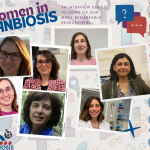
The revolutionary path of research in NANBIOSIS and advice on Woman’s Day 2024
Our interview series delve into the journeys of 7 female researchers, their challenges, and the call for gender equality in science, inspiring the next generation. March 8th 2024, NANBIOSIS (Spain) Kicking off on 11F “International Day of Women and Girls in Science” 2024, and spanning all the way until Woman’s Day 2024, our interview series has aimed to highlight the life, career and opinions of some of the brilliant minds within our network. Today is time to wrap it up, and for this reason we present you a summary of each of them and a chance to take a deeper[...]
29 Feb
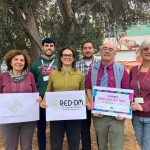
The new official webpage of RED-DM is coordinating research efforts in Myotonic Dystrophy
NANBIOSIS introduces the new webpage of RED-DM, uniting experts to combat Myotonic Dystrophy. Highlighting Ramón Eritja’s group’s pivotal role. 29 February 2024, IQAC-CSIC (Barcelona) In a significant stride toward addressing the challenges posed by Myotonic Dystrophy, the Translational Genomics Group of the INCLIVA Health Research Institute (associated with the Valencia Clinical Hospital) and the University of Valencia (BIOTECMED Institute) have spearheaded the establishment of the Red Temática Nacional en Distrofia Miotónica tipo 1 (National Thematic Network in Myotonic Dystrophy Type 1). This progressive and degenerative disease, also referred to simply as DM1, is currently incurable and underdiagnosed. In addition, it[...]
15 Feb
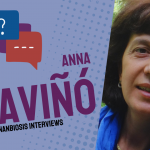
Women in NANBIOSIS part 1: Anna Aviñó, from Curiosity to Innovation
Anna Aviñó speaks about her journey as a researcher and her captivating oligonucleotides. This is part of a series of interviews to several female researchers within the context of International Day of Women and Girls in Science 2024 and Woman’s Day 2024. For more interviews, visit our news section here. February 2024, IQAC-CSIC/CIBER-BBN, Barcelona (Spain) Could you share with us a bit about your research area and the projects you are currently working on? I am a chemist specializing in nucleic acid chemistry. These compounds are wonderful, I would say unique; not only do they contain genetic information, but they[...]
06 Feb
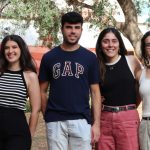
‘Magic Bullets’ Against Cancer: Unveiling the Potential of DNA Nanoparticles
DNA nanoparticles to selectively target tumor tissues through precise control of the synergies between transported drugs. February 2024, IQAC-CSIC/CIBER-BBN, Barcelona. The team led by Drs. Carme Fàbrega and Ramón Eritja, in close collaboration with 3 units of the NANBIOSIS ICTS, has developed a new strategy to improve the efficacy and reduce the toxicity of anticancer drugs. They have chemically linked several cytotoxic drugs, currently used in the treatment of various types of tumors, to DNA nanostructures. These structures selectively target cancerous tissues through folate receptors. This tactic allows precise control of drug concentration and exploits their combined effect. The results[...]
27 Feb
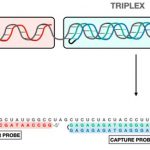
New method for the detection of RNA viruses such as SARS-CoV-2
Several CIBER-BBN groups at the University of Barcelona, the Institute for Advanced Chemistry of Catalonia (IQAC-CSIC), the Institute of Microelectronics of Barcelona (IMB-CNM-CSIC) and the Institute of Nanoscience and Materials of Aragon (INMA) —a joint institute of the CSIC and the University of Zaragoza (UNIZAR)— have developed a new method for detecting RNA viruses based on the technology of using probes that form triplex structures. This innovative methodology opens up new options to detect viruses such as SARS-CoV-2, the influenza A (H1N1) virus or the respiratory syncytial virus (RSV), a pathogen that affects newborns and requires differential diagnostic care. This[...]
15 Nov
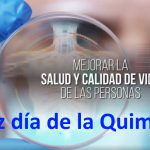
Happy Day of Chemistry! The role of Chemistry in a sustainable research in health
Today, November 15 is a day of celebration for us, the Day of the Chemistry in Spain! Chemistry is the science that studies matter, how it is composed, its properties and how its structures are transformed and, as matter is everything, including living beings and ourselves, we can say that chemistry is omnipresent and transversal in all areas surrounding us. Chemistry is everywhere, we ourselves are chemistry and our health and our life is chemistry. “Everything around us is chemistry in the environment, foods, what we use and what we touch every day. Our own body is a sophisticated complex[...]
27 Jul
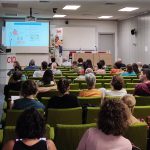
1st Nanomedicine Forum of CIBER-BBN/NANBIOSIS and CSIC Nanomed Conection
During the days 30 of June and 1st of July took place in Barcelona, in the auditorium of the Institute of Advanced Chemistry of Catalonia (IQAC-CSIC), the 1st Forum on Nanomedicine gathering scientists from the CSIC net Nanomed Conection and from the CIBER-BBN and its ICTS NANBIOSIS. This forum brought toguether researchers from the most eminent national research centers in nanomedicine, that during the two days meeting presented their works and findings and discussed the impact of nanomedicine in the fields of drug delivery, diagnosis and therapy. The workshop was open by the Director of IQAC-CSIC, Jesús Joglar, the Scientific Coordinator[...]
03 May
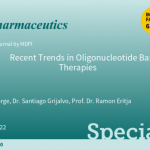
OPEN SUBMISSION FOR JOURNAL SPECIAL ISSUE ON OLIGONUCLEOTIDE BASED THERAPIES
Dr. Ramon Eritja, Scientific Director of NANBIOSIS unit 29 of Oligonucleotide Synthesis Platform (OSP) and Dr. Santiago Grijalvo researcher at NANBIOSIS unit 12 of Nanostructured liquid characterization, from CIBER-BBN and IQAC-CSIC, together with Dr. Andreia F. Jorge, from Coimbra Chemistry Centre (CQC), acting as guest editors of journal Pharmaceutics, of MDPI Publisher, welcome authors to submit their articles on special issues on Recent Trends in Oligonucleotide Based Therapies. In the past few decades, significant efforts have been made towards the clinical application of oligonucleotides. However, the potential of the therapeutic applications of RNA-based strategies have recently been spotlighted after the first approval of mRNA vaccines in response to COVID-19[...]
